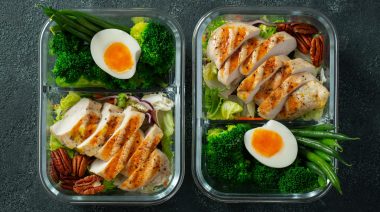I learned to do the Texas two-step in my small farmhouse kitchen. My dad loved a good country western dance and his solution to long winters in Minnesota was to push the kitchen table out of the way, turn on a western radio station, and dance. He could dance a mean country swing and a proper two-step which he then taught to my sister and me. Bonding in this way kept us all active during the winter flurries and we’d often stay up late, breaking a sweat and breaking down in a fit of laughter by the end of the evening before retiring off to bed.
I learned to do the Texas two-step in my small farmhouse kitchen. My dad loved a good country western dance and his solution to long winters in Minnesota was to push the kitchen table out of the way, turn on a western radio station, and dance. He could dance a mean country swing and a proper two-step which he then taught to my sister and me. Bonding in this way kept us all active during the winter flurries and we’d often stay up late, breaking a sweat and breaking down in a fit of laughter by the end of the evening before retiring off to bed. Not only did my little farmhouse kitchen provide dance entertainment, it also provided a venue to learn how to construct a basic meal plan. Our family relied on a weekly meal plan to keep our busy weeknights on schedule. Much like learning a Texas two-step, learning to meal plan is a simple and customizable dance once you know the steps.
Creating a meal plan for you or your family might sound intimidating but it’s fairly straight forward and easy to do. You don’t need to have a degree in nutrition to prepare a meal plan for you or your family, but you will need to dedicate some quality time to putting it together. Once you have it created however, you’ll be able to prepare your week’s meals without needing to put much thought into it because the hard work is already done.
Meal Planning Benefits Everyone
Busy households, families, and athletes of all types can benefit from creating a meal plan. By creating your own meal plan, you’ll stay on track with calorie and macros that are catered specifically to your needs. I recommend beginning with one week and building from there. Once you have a few weeks created, you can later mix up the weeks into a full month or more of healthy meal rotations. This doesn’t have to be fancy. You can scribble everything down in a notebook or enter everything into a spreadsheet. Whatever is easiest for you to complete and be able to follow afterwards. I highly recommend keeping the recipes for each week bundled with the meal plan for that week for easy reference. The following steps are in order of how I put together my meal plans.
Step 1: Gather Recipes
The recipes you use can be a mix of any healthy recipes that you have available. Use some family favorites. Find a few new ones from your favorite food blogger or recipes sites on the web that you’ve been wanting to try. Clip some out of your recent fitness magazine. Re-use some from an existing meal plan that you’ve used in the past.
Find at least enough recipes or simple combo ideas (ex: eggs, oatmeal, and fruit for breakfast, baked chicken marsala with broccoli side, slow cooker vegetable chili) to account for the major meals of the day. My key to successful meal planning and more importantly, successful adherence to it, is to start with healthy recipes that my family and I enjoy.
Step 2: Set Your Goals
It’s an important part of the process to determine if there are specific goals that you have for each day of the week for calorie and macronutrient needs. This may vary by day depending on your activities. For example, you will most likely need more calories on days that you have a heavier workout or a higher activity level. Weight training will require more protein, whereas endurance training will require more carbohydrates. If you’re just wanting to do a basic healthy eating meal plan, you may not even need to meet specific macro goals. In that case, focus on maintaining an average total calorie intake within a well-rounded, nutritious daily meal plan.
Step 3: Determine What Totals You Need
Calculate macronutrient totals (fat, carbohydrate, and protein) and calories per serving for each recipe, so you can ensure you have what the right amounts for yourself and your family. Some recipes may already have calorie and macronutrient information included. If not, you can calculate these totals by entering the recipe ingredients into nutrition calculator and jotting that info down on the recipe. The two easiest no-cost calculators that I find to be the most accurate in calorie and macronutrient numbers are MyFitnessPal (under the food tab and then recipes to enter and calculate) and Very Well.
No nutrition calculator is 100 percent accurate on all nutrient info but these two have been reasonably close to what I’ve hand calculated from nutrition fact labels and as a cross check from the USDA Food Composition Database. If you’re concerned about sugar and sodium content, these are the two nutrient areas I’ve found the most drastic discrepancy in ingredients info so you may wish to cross check items if you need to keep tabs on sugar or sodium.
Step 4: Make a Calendar of Meals
Set your calendar for one week, two weeks, or a month, whatever your preference and calculate the daily totals. You can make this as simple or complicated as you like. There are many templates available online for meal plans or you can create a grid in a notebook if you prefer. Once you have a template or grid created, sketch in the meals you wish for each day keeping in mind how much time you have for each meal to prep and cook. Keep the simplest recipes for the meals when you have the least amount of time.
Account for eating your leftovers to minimize food waste. You could also intentionally make a double recipe for a meal knowing you’ll make use of the leftovers later. This makes the planning, cooking, and nutrition calculations a little easier. If you have little to no time to cook for lunch, this is a great meal to schedule in leftovers. Likewise, if dinner is the meal that you have the least time to cook and prep, plan the easiest meal (or leftovers) for the dinner hour.
After you’ve assigned meals and accounted for leftover portions for each day, add up the total calories per day (from the info you gathered in step 3 for each recipe) and the total macronutrient numbers per day.
Step 5: Make Adjustments as Needed
Adjust meal combinations as needed to balance your caloric and daily macro goals based on what you determined in step 2. Look at how each day’s calculations even out for calories, protein, carbs, and fats. If you’re aiming for a consistent calorie intake, swap meals around if needed to find the combinations that maintain roughly a similar calorie intake per day. If you have days that require more calories, you can either swap meals around to have higher calorie meals on those days (or higher protein meals/higher carb meals, etc.). The other option is to fill in any additional calorie or macro requirements with additional side dishes, snacks. or mini meals in between.
Step 6: Use Snacks as Needed
Fill in between meals with snacks or mini meals specific to your needs and recalculate daily tallies, if needed. Using snacks or mini-meals between the main meals is a great way to even out your macronutrient needs and you can make adjustments as you plan. Choose protein heavy snacks (like diced turkey and cheese) if your goal is to add protein to your day. Alternately, add carb heavy snacks (like rice crackers with apple slices) if your goal is to add carbohydrates to your daily totals.
Step 7: Create Shopping Lists by Week
After your meal plan is complete, gather the recipes you’ve assigned for that week. Then, on a notepad or spreadsheet, make a tallied list of each ingredient and quantity. For example, if you use half an onion for Monday, you may need that other half onion later in the week in a different recipe so you’d tally one whole onion. Make note of spices and pantry items used as well.
Before you head to the store, take note of what ingredients you may already have on hand from a previous week’s shopping trip. This will save on your budget as well as preventing food from being wasted.
Step 8: Use Your Plan
Now you can start using your completed DIY meal plan catered to your own personal needs. Not ready to master this meal planning dance quite yet? No problem. I’ve got you covered with a 28 Day Clean Eating Challenge meal plan to get you started. After this challenge you’ll have a stockpile of recipes that you can use to create your own mash-up meal plan.






